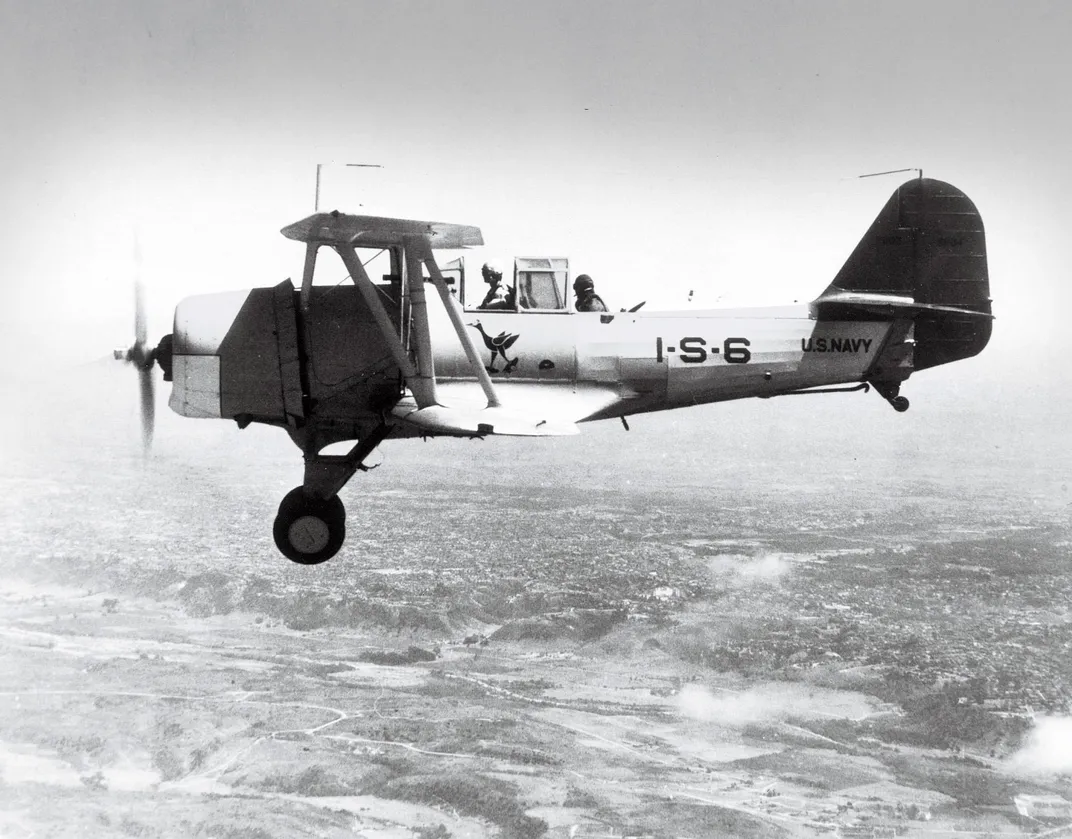The Search for Amelia Earhart
10 days, 48 airplanes, 250,000 square miles of ocean.
/https://tf-cmsv2-smithsonianmag-media.s3.amazonaws.com/filer/bf/8c/bf8ccf43-c331-4877-94b8-0e36db132630/04-1g_as2021_partofhistory-eleanorrooseveltandearhart.jpg)
It was while I was in the Navy, flying the Vought SBU Corsair with a scouting squadron, that I became involved in the search for Amelia Earhart. The news of her disappearance had hit the newsstands on the Fourth of July weekend in 1937, and the carrier USS Lexington was sent on a hastily organized search mission. Most of us came aboard thinking we would only go out a thousand miles or so before the whole thing was called off, so we brought along only an overnight bag with a pair of pajamas, a razor, and perhaps a change of underwear. As it turned out, we stayed aboard for a month and eventually had to buy clothes from the ship’s store.
We started our search on July 13 from Earhart’s last known destination, Howland Island. At a given signal, two lines of 24 airplanes formed on each side of the ship and began flying away from each other, 90 degrees from the ship’s course. During the flights, which lasted about three hours, the pilots all gazed toward the center of the flight line and the rear-seat men looked in the opposite direction with binoculars. Each of us was anxious to be the first to sight Earhart and her navigator Fred Noonan, so we paid close attention to the ocean below us. We figured they would be in a rubber boat, and from our 500-foot altitude we could see anything—garbage, trash—floating in the water.
As we covered miles and miles of empty ocean, we got a good idea of how the two in the Lockheed Electra must have felt as they hoped for a tiny bit of land in an endless sea. Our search took 10 days, during which we covered 250,000 square miles, an area the size of Texas. Of course, we never found a trace of Earhart, Noonan, or the Electra. On July 23, the Navy called off the search and we headed home. One thing we didn’t run out of the entire time was steak. Apparently they had just stocked the cold storage aboard the Lexington, and it seems to me we had steak nearly every meal until we started to get sick of it. And when I got back to San Diego my mother and brother met me and took me out—for a steak dinner.
